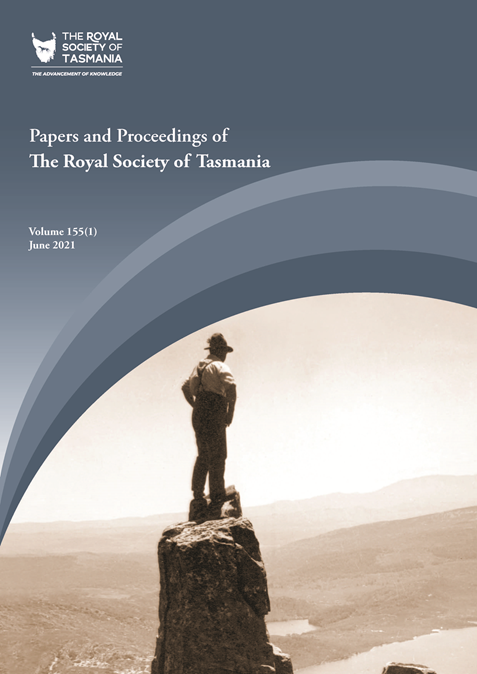Launch of the Northern Branch Centenary Edition of the RST Papers and Proceedings
27 June 2021

Your Excellency, Professor Chalmers, distinguished guests, members and friends of the Royal Society of Tasmania:
The Royal Society of Tasmania has an unbroken record of annual publishing since its inception in 1843. We still produce a hard copy journal, and exchange copies with major academic institutions around the world. But it is in the digital world that the wider significance of the journal becomes apparent.
After twelve months, all the articles in our Papers and Proceedings are digitised and can be downloaded. If you haven’t yet investigated this, there is a link from our website, for you to view and download the digitised articles. And the number of downloads is staggering – for example, last year there were more than 67,000 downloads of our Papers and Proceedings. This is tangible proof of the value of our journal to researchers and to the community.
I’d like to draw your attention to the cover of this volume. A photo of someone standing on a mountaintop looking at one of our beautiful Tasmanian vistas is not unusual today. But this was not the case in 1936, when this photo was taken. Most Tasmanians had never seen photos of our remote and iconic places; the person pictured here is Fred Smithies, a legendary bushwalker and photographer who was President of the Northern Branch for eight years. He and other early Royal Society members campaigned for the establishment of Tasmania’s national parks and reserves.
In this special issue, Dr Eric Ratcliff, Northern Branch President and a member of the Society for over 50 years, offers his reflections on the history of the Branch accompanied by a list of Branch Presidents since 1921. A paper by Lynette Ross provides fascinating insights into the early days of the Northern Branch and the key figures in its formation.
Dr Patsy Cameron, noted researcher and Aboriginal Elder, has contributed a paper ‘Tyereelore and Straitsmen: The true story of Tasmanian Aboriginal survival’ that reveals a nuanced interpretation of Tasmanian Aboriginal histories. Many of you will be aware that greater engagement with the Aboriginal community is a commitment the Society has made following our Apology to Tasmanian Aboriginal people in February this year.
As a child growing up in Northern Tasmania I was thrilled by visits to the planetarium at the Queen Victoria Museum and Art Gallery. So I’m delighted that this special volume contains an account by Launceston-based astronomer Dr Martin George of how our small island state became a centre for astronomical research and education recognised worldwide.
Some Tasmanian readers of this volume will remember being given ‘goitre tablets’ as we called them in primary school, containing iodine to combat the deficiency identified in Tasmania, and will read with special interest the article by Dr Paul Richards on the Tasmanian thyrotoxicosis epidemic of the 1960s.
The study of natural history has always been an important focus of the Royal Society of Tasmania. This volume contains an account by Martha McQueen of the contributions made by the Central North Field Naturalists to improving nature conservation in Tasmania.
The Northern Branch of the Royal Society has supported the acquisition by the Queen Victoria Museum and Art Gallery of the nationally significant Lambkin-Knight butterfly collection, and David Maynard explains the importance of this collection to future research.
Naturalists will also be interested to learn more about the endemic Tasmanian Digger Wasp in the article by David Maynard and Simon Fearn. And Rachelle Hawkins explains how the aquarium industry is making an important contribution to improving the survival of two of the world’s most unique marine fish species.
Studying the geological characteristics of Tasmania has been a key focus of the Society; in this volume, Dr Eric Ratcliff continues this tradition by explaining the European uses of dolerite in Tasmania from early colonial times to the present day. Dr Keith Corbett describes the geological history of the Tamar Valley and the Launceston area during the making of Tasmania over 70 million years ago.
Finally, Peter King outlines research led by the Australian Maritime College in Launceston to deploy autonomous underwater vehicles delving beneath Antarctic ice shelves to gather vital information about how glaciers change and melt.
This special volume of the Papers and Proceedings exemplifies the contribution made by the Northern Branch of our Society to knowledge of natural, historical and cultural aspects of Tasmania.
On behalf of the Society, I extend very warm congratulations to everyone involved in the creation of this important special volume, including all the authors; Chel Bardell and the Centenary Committee; Hon. Editor Dr Sally Bryant; and members of the Publications Committee.
It is a great pleasure to launch this centenary edition of the Papers and Proceedings, and to present to the Northern Branch this specially bound and inscribed copy to place in the Northern Branch library. I ask Northern Branch President Dr Eric Ratcliff to come forward to accept this on behalf of the Branch. I also ask the authors to come forward to receive their copies of the journal, and thank them for their contributions.
Mary Koolhof
President
The Royal Society of Tasmania

